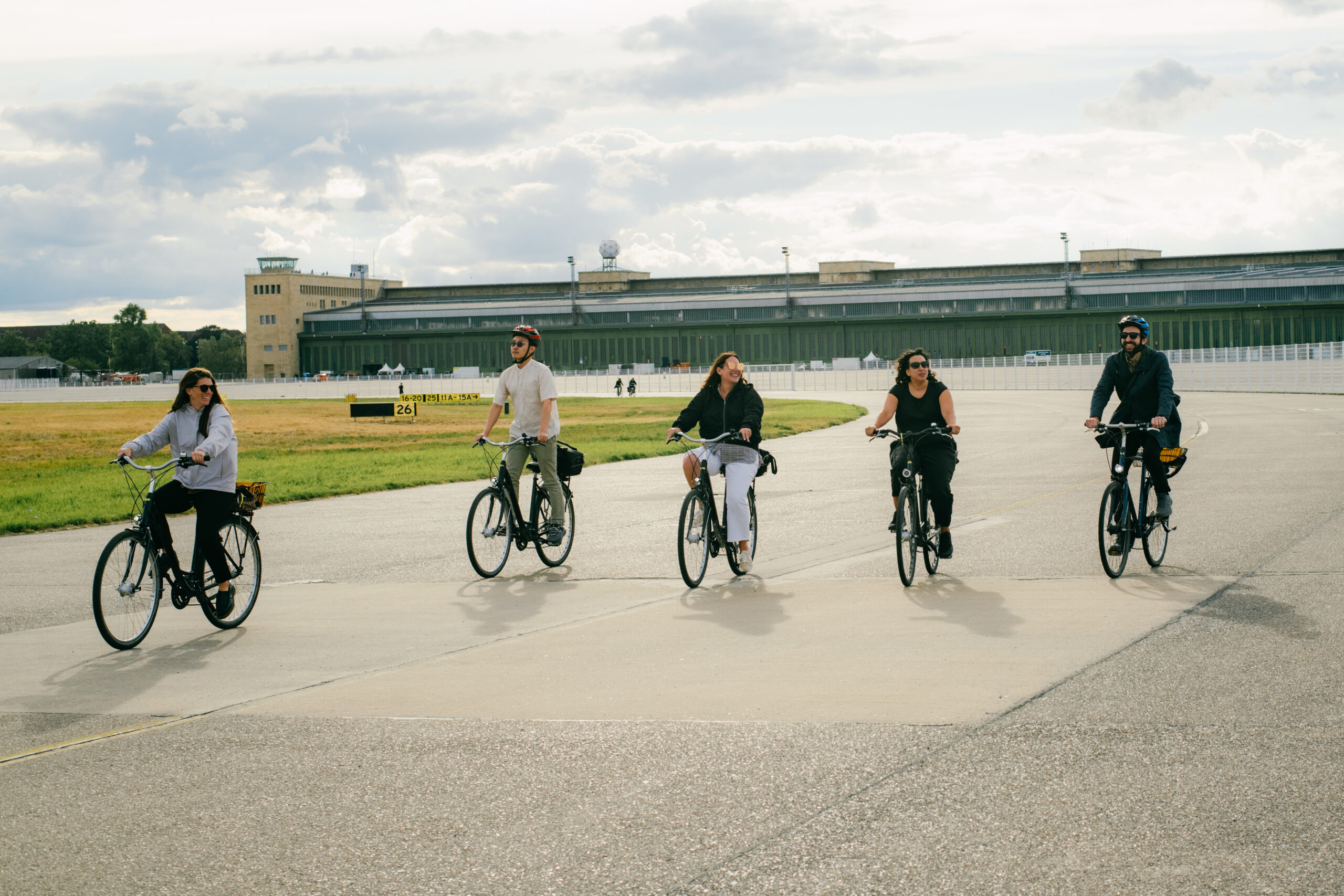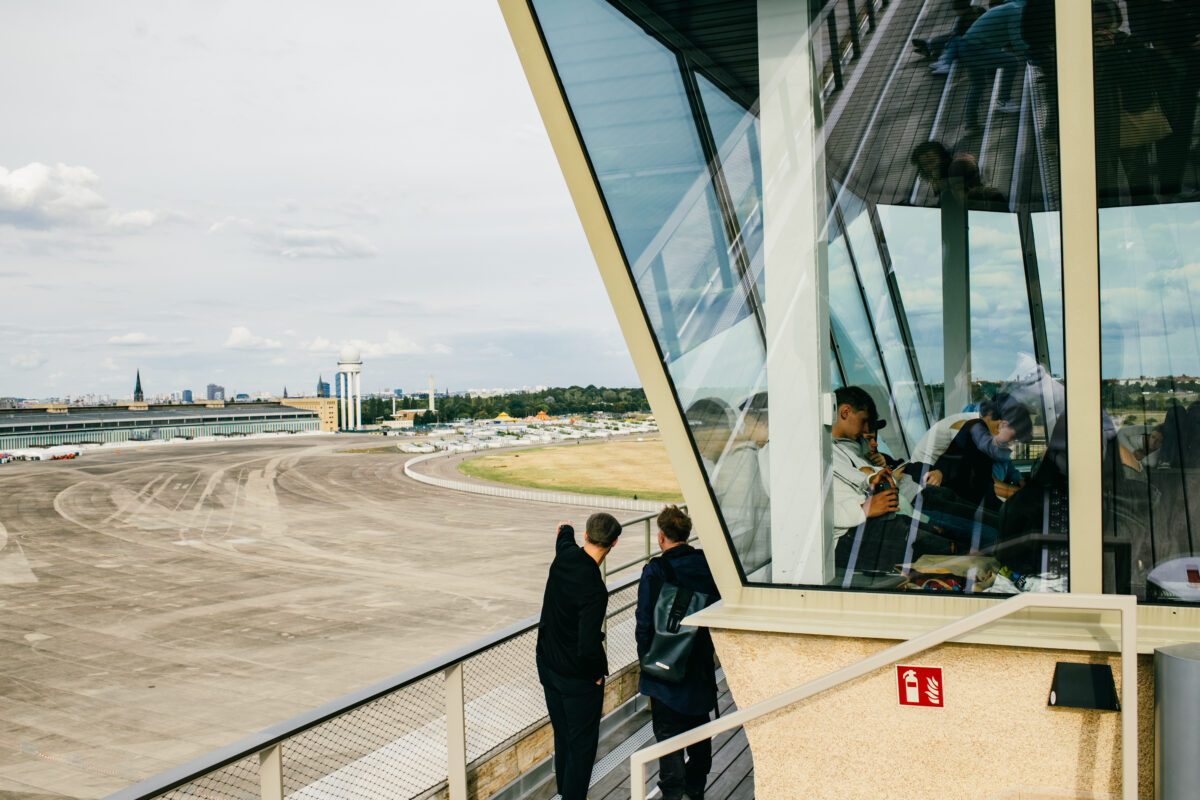
In this Practice Note, you’ll hear from our Global Exchange staff about what we’re learning as we build solidarity between leaders in New York City and other cities taking “big swings” at their housing crises. An immersive, 3-day study trip in September connected Global Fellows with leaders, key case studies, projects and policy shifts in Berlin.
Covering over 300 hectares—roughly the size of Central Park—Tempelhofer Feld was hailed a “globally unique pearl in the heart of Berlin” during a recent citizen assembly held by the Berlin Senate for Urban Development. Despite the city’s deepening housing crisis, a majority of the 275 Berliners randomly selected for the session opposed building housing on the edges of this former airport turned beloved urban oasis.
Tempelhofer Feld’s existence is intertwined with Berlin’s rich and complex history. Once an iconic airport serving West Berlin, its closure in 2008 led to its transformation into one of the world’s largest urban parks. In 2014, Berliners voted in a landmark referendum to keep Tempelhofer Feld free of development in perpetuity.
The controversy surrounding whether to build housing on this singular public space has become a microcosm of the broader tensions confronting growing cities today, making it a timely case study in urban development. The Global Exchange Fellows examined Tempelhof during their Berlin study trip, speaking to a constellation of stakeholders engaged in the debate. Beyond the fate of this prized park, Tempelhof raises questions about how to navigate increasingly pressing, competing priorities—housing shortages, pressures on public space, democratic participation and environmental stewardship.
The city’s housing crisis is at the heart of the debate. Berlin’s population has grown by over 400,000 since 2011, with rents nearly doubling in a decade. 85% of Berliners are renters and vacancy rates sit at a mere 0.8%. As pressure to build new homes intensifies, city planners see Tempelhofer Feld’s underutilized land as a potential solution, arguing that housing on its periphery could ease the strain without encroaching on more developed parts of the city.
However, the proposal to develop the field has laid bare the competing values at play. Tempelhof is not just unused land—it’s a cherished public space with ecological, recreational, and historical significance. In a city that continues to densify, its wide-open vistas and green space provide rare relief. For many, Tempelhofer Feld is a vital “green lung” for the city, reflecting Berlin’s commitment to public spaces. The trade-offs are stark: housing is urgently needed, but building on Tempelhof would diminish an essential public asset.

The controversy also implicates Berlin’s long tradition of civic engagement and grassroots activism that has defined the city’s post-reunification identity. The 2014 referendum represented a clear and direct expression of public will — a triumph in participatory democracy. Many argue that allowing development would not only undermine the spirit of that decision, but weaken trust in the democratic processes more broadly.
And yet, the housing crisis has greatly intensified since 2014, along with the imperative for compromise. Another camp in the debate argues that new realities may justify revisiting the development plans initially proposed in 2010, to address the city’s urgent housing need.
Ultimately, the controversy over Tempelhof highlights the inherent tension between the shifting needs of a growing city — with housing at the center. Tempelhofer Feld is in this sense not just a park, but a battleground of values that defines Berlin’s identity and future.